Sam Mendes & Screenwriter Krysty Wilson-Cairns on Their Epic WWI Drama 1917
1917 is the story of an urgent message and the two WWI soldiers who have to deliver it to prevent hundreds of their fellow British troops from walking into a trap. We accompany them on an arduous, dangerous journey in what appears to be one long, breathtaking shot. In an interview with The Credits, director Sam Mendes and his co-screenwriter Krysty Wilson-Cairns talked about the research they did for the film and how they crafted this meticulously constructed, relentlessly intense and deeply personal war epic.
I want to begin by asking you about the sky, which is almost a character in the movie; it is so expressive.
Mendes: Roger Deakins and I went to France and to Belgium for our research and to visit the Somme, and so did Krysty separately. We all took our pilgrimages to the places in northern France and Belgium where the war was at its peak. One of the things you notice when you go there is it’s obviously a very flat, very bleak, but beautiful landscape and the sky is very, very dominant. You do feel this immense scale of it. You see a long, long way.
Obviously, you can’t shoot in those places. They’re all historic sites and heritage sites and quite rightly preserved. Plus, they’ve got a bunch of shrapnel and explosive devices that are still under the ground. They’ll be there for hundreds of years before the ground will churn it all up. So, you have to find the equivalent landscape in the UK and we found it on Salisbury Plain which is a thousand feet above sea level but it’s very, very flat. It’s where Stonehenge is built and you can feel this immense landscape. It’s because you’re so high that the sky drops down below the horizon. It’s a sort of microclimate and the good thing about that is even when the weather was bad for us it was only a couple of hours before it turned again. You could see it rolling in for miles, so that sense of depth in the sky and distance is defined by those cloud formations. It’s very striking and I think that it’s one of the things, I think we were both worried about originally. We wanted to shoot it with no sun. You think, “Oh God, this is going to be flat grey skies the whole time.” So, we were thrilled that the degree to which it was constantly changing. It really is just figures and flat land as far as your eye can see and then this amazing canopy. Every sky, to state the obvious, has its own personality.
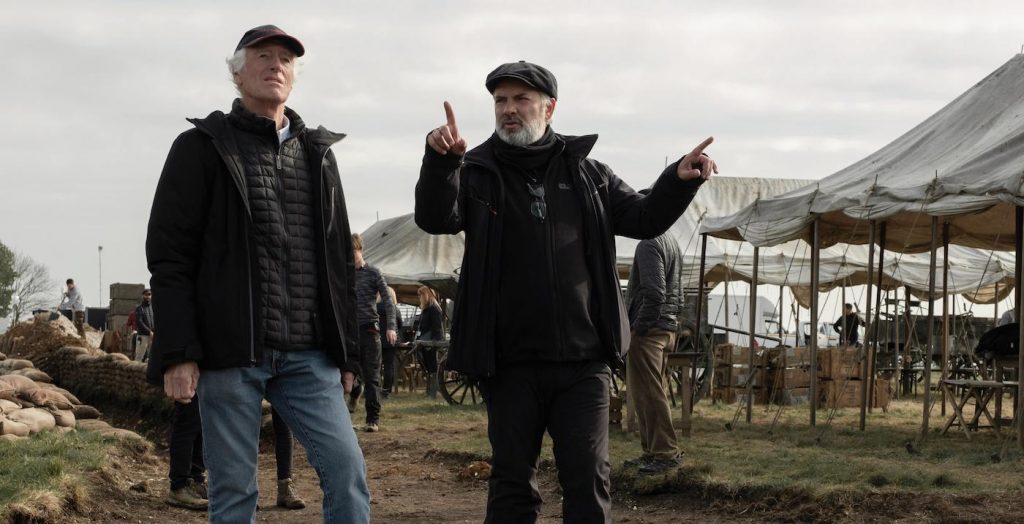
Tell me about the research that you did for the film. Did you read some of the diaries of those who served?
Wilson-Cairns: Yes, I read hundreds of first-hand accounts; I went to the Imperial War Museum and looked at the original diaries and then I went to France as well. I drove basically the journey that the boys would have taken. It was incredibly moving; there was a mile of stretch road in France that had five cemeteries along it, and I was able to walk around in them.
I’d made these trips before when I was in school and with my family and when you’re young you think of men as big soldiers, you think of them as adults. Now I find myself in these cemeteries and I am older than all the boys buried there. I found that profoundly moving just to see how the landscape is forever altered by what we did to it. Everything’s grown over it but there are still the fossilized trees. You can see this 300 yards in which thousands of Canadians died over three years.
It brings home first of all the landscape, how beautiful it is and how solemn it is, but also just how small it is. At the same time, you have this vastness but also this microcosm.
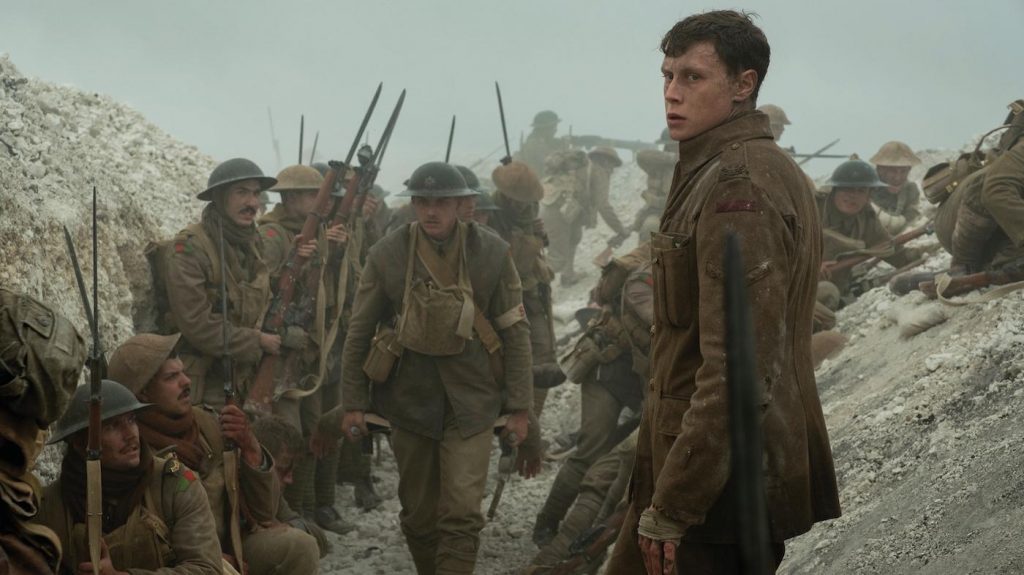
Were there particular details that you discovered that stood out to you as essential to be included?
Wilson-Cairns: The one to me is always the milk. Actually, I was listening to first-hand accounts in the Imperial War Museum — in the ’60s or maybe the late 50’s they had the veterans record in their own voices. I was listening to this veteran talk about that time he stole milk. It was during the 1914 retreat and he was wracked with guilt because he was a farmer and he’d stolen this milk. Two days later he found himself in a cellar with a baby that was starving. Although it was a different sort of combination of those events in our film, I think that moment was very profound. The man spoke about how he felt for the first time in the entire war that he was there for a reason, that he had some kind of purpose in this vast and giant kind of chaos and so to me, that really resonated.
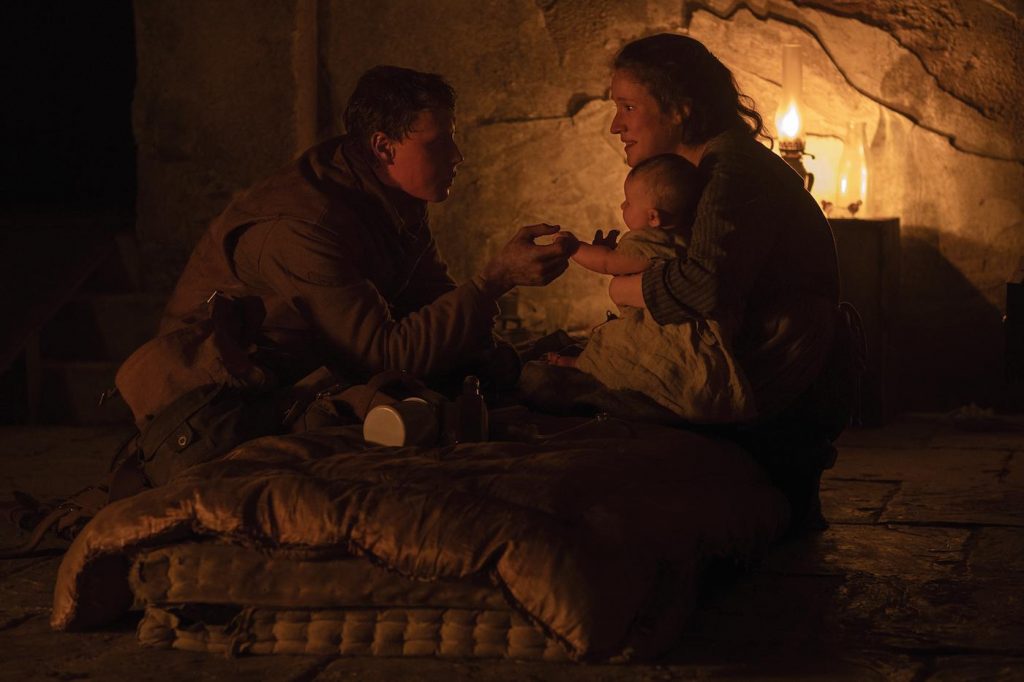
Mendes: And then I had a similar one, which is I read a personal account of a concert and the soldiers stumbling on to a concert in the woods on a piano. He said they had looted a piano from a farmhouse. One of the soldiers was playing a Debussy nocturne and the others were all sitting around listening and two things struck him. He said (a) it was the most beautiful sound he’d ever heard but (b) he hadn’t heard music for two years and he’d almost forgotten about it. I thought that was incredibly powerful.
That becomes the singer in the woods because I thought a piano felt too contrived. So, someone said, “Evans, you’ve got a good voice. Sing us a song, mate,” and then he would stand up and then they’re all like “When I said ‘sing a song’ I didn’t know you were going to sing about life and death,” and they’re just held in that moment.
Those are two examples of two direct pieces of research that found their way straight into the main artery of the film. But then for everything you underline or you mark a page, maybe 20 percent of it made it even close to the movie because there’s so much detail from that war. We had stuff about gas and gas masks, we had stuff about tanks, we had stuff about machine guns, the beginning of industrial warfare, we couldn’t get it in because the story didn’t need it or demand it so they just fell away. You have to go in with a full tank of gas, and then you can begin to sculpt it.
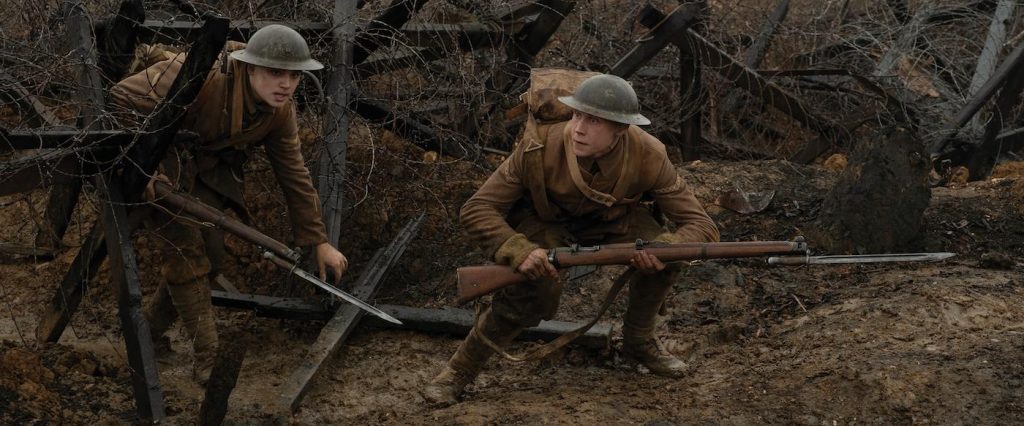
I know the film was inspired by your family history, but the two main characters are fictional, right?
Mendes: I wanted to have somebody old-fashioned as Schofield, internal, quite serious and quite dignified; quite English really and internal, not someone who revealed everything. We wanted a middle-class boy, a grammar school boy as we would call them and then I wanted a working-class lad who was younger, perhaps a bit sturdier, but also a bit more vulnerable and chatty. I joked with the actors that if you went in the pub, Schofield would be sitting by the fire on his own with his dog and with his glass of wine reading a book and Blake would be the lad at the other end of the pub standing at the bar with all his mates telling stories. Those two are thrown together by the war and form this unlikely friendship. War stripped people of their social class, their status, the things that home gives them. They’d just be two people in uniform. Suddenly you see people a little bit more as an equal you probably wouldn’t even mix with in real life. That’s why I wanted to get that interesting mixture of two people who are an odd couple in a way but who instinctively love each other.
When I first heard about the film I could not imagine how you would solve two problems: I was afraid it was going to look like a first-person shooter game and I was afraid that like Alfred Hitchcock’s movie Rope you would be able to see the actors worried about the pressure of the one long, continuous shot. How did you overcome those challenges so well?
Mendes: Hitchcock had it harder. He had no visual effects; that’s the bottom line. It was much more difficult in those days. He had to change the film every 10 minutes come what may. I didn’t have to worry about that. I did worry about making sure it felt coherent and if it felt like we were stitching shots together, not just that you didn’t see it but also you shouldn’t be thinking about it. You should be watching it.
The game problem though was the biggest issue. It was a total concern of ours. I didn’t want it to feel repetitive. I didn’t want to get stuck in the same point of view. I didn’t want to trot along behind them all the time or indeed just keep looking at them. There had to be many different relationships between camera and character and they had to emerge organically.
So sometimes the camera is very subjective and very intimate and a lot of the time they’re far away and the camera’s more objective and sees them in the landscape. Sometimes you have to understand distance, what’s left to travel, sometimes physical difficulty, time; all of these other things and the constantly changing and evolving landscape and weather and skies. So, the big conversation was this evolving style which allowed this sort of constant dance between camera and character and landscape, all three of which are moving all the time.
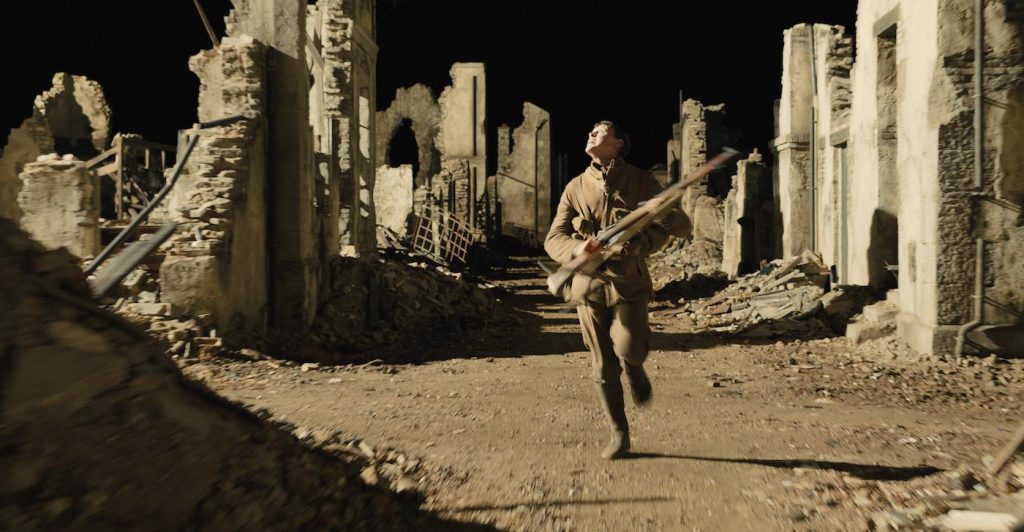
It didn’t trap us. We didn’t feel constricted. We felt like either the land had to dictate how we moved or the emotional life of the characters but that somehow the point of shooting this way is to give us direct access to them and that these other choices of where the camera went were as much to do with what was going on emotionally with the characters as it was anything.
For example, the scene with Blake when he gets wounded — the camera is very unusual because it moves around but in a way that’s sort of expressing the panic and the fear. So, there weren’t even any rules, it wasn’t like when they stopped moving we stopped moving because actually, that doesn’t happen always and sometimes when they’re moving fast you’ll let them get away from the camera and then find a way to get back to them again.
I had one rule which was not allowing any panning between people back and forth in dialog scenes. So, the sense of these two ribbons that intersect at times and at other times kind of diverge; the two ribbons are the ribbon of the camera and the ribbon of actors or the characters and those two things move constantly in flux against each other. That’s how we go out of that feeling that we’re just going to trot along behind them and bang, bang, bang.
Of course, the big difference is you’re not in control as you are in a game. You’re being told a story. You have to give yourself up to it and I hope it achieves an emotional connection which you don’t get from a game. So, it makes you understand what movies can do that you can’t get from video games even more; it crystalizes that perhaps.
1917 is in theaters on December 25, 2019.



